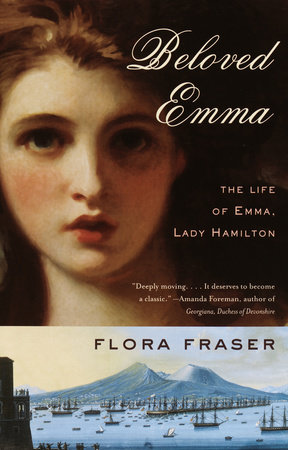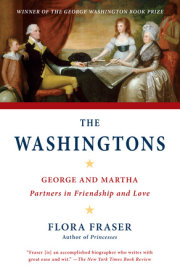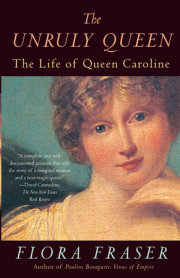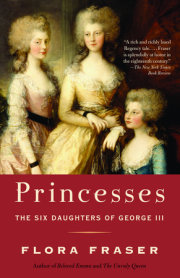CHAPTER ONE
From Hawarden to Sir Harry
Emma Hamilton began life as Emy Lyon on 26 April. That, at least, is the date she always celebrated as her birthday. As no record of her birth survives, the year of her birth is not known for sure, but her parents, Henry and Mary Lyon, were married on 11 June 1764. Emy was baptized on 12 May 1765. It seems reasonable to assume she was born in the year of her baptism.
She was born in Ness, near Denhall, on the windy Wirral Peninsula in Cheshire, overlooking the Dee estuary. The parish of Neston wa described in 1809 as one of the most miserable townships on the Peninsula, a collection of hovels inhabited only by colliers. The pit at Denhall had been opened in 1750, and Henry Lyon was identified on Emy's baptismal certificate as smith 'of Ness'. Probably he worked in connection with the pit.
A tall building, known as Swan Cottage, still stands on a bank at Denhall. From the uppermost rooms, there is a fine view across the wide estuary to the northern coast of Wales. No hovel, by reason of its commanding height it was later used as a shipping beacon. However, it is reputed to have been the smith's house at this date. At the back of the house is a plaque inscribed 'I.L. S.L. 1724', so there may have been Lyons living here before Henry. In this house we may see Emma Hamilton's birthplace.
Of Henry Lyon little is known. As he signed his marriage certificate with a cross, the illiterate's mark, we may safely dismiss more romantic tales which sprang up in the Victorian times. Emm Hamilton's great-grandson believed Henry was the estranged son of a nobleman, beating out his anger against his sire on the anvil.
Henry died from unknown causes and was buried on 21 June, being named then as smith 'of Denhall', barely two months after his daughter's birth. We need linger no further in squalid Denhall. Tradition has it that his widow immediately took her infant across the estuary to Hawarden in Wales, where her parents lived.
Mary Lyon's parents, Mr and Mrs Kidd, lived in a small 'cruck' cottage, distinguished from the other thatched and whitewashed dwellings in the village by a set of red sandstone steps. Mary had at least one brother, William, and three sisters, who were to become the Mrs Moore, Connor and Reynolds. Possibly, when Mary brought her baby, there were one or two of these still living at home.
The Steps, as the house was known, lay at the end of an old lane which ran down under the park wall of Broad Lane Hall, on the opposite side of the road to the Glynne Arms. Sir John Glynne was owner of the estate, which, in later years, as Hawarden Castle, was to be Prime Minister Gladstone's country home. Many of the villagers worked for Sir John in some capacity or other. There was a variety of industry practised in Hawarden-cheese-making, arable farming, coal mining. Mrs Kidd had a carrier's business and took produce from the Hall, together with sacks of coal from the works, to sell in Chester market.
Sarah Kidd was a formidable lady. In the 1890s a story was still remembered in which robbers were said to have attempted to steal the proceeds of her sales at Chester. They lay in wait on the road leading back from Chester along the southern side of the Dee estuary. Mrs Kidd, stout in defence of the contents of her loose pocket, belaboured them with her whip with such ferocity that they fled.
The Kidd men played second fiddle to the women of the family. Emma's grandfather was allotted in his wife's enterprise only the part of taking her proceeds up to the Hall. Otherwise he guarded sheep on Saltney marshes, a sodden stretch of land to the east of the village. It is said he used to dig a deep hole and stand in it, firing an ancient shotgun at marauding dogs who ventured near his flocks.
Of Emma as a child we know little. In the 1890s the local historian Hilda Gamlin could discover only the tradition that Emma had stood by a donkey on the Chester road and offered handfuls of coal for sale. Whether this was a scheme of her grandmother's or of her own devising, it is the only instance in her life where Emma showed any financial grasp.
Other ancestral memories of Emma being a sweet young girl, and very generous always, ring true. She spoke of herself as of having been 'wild and thoughtless' as a child. In a household where those who could work did so—with the exception of William, who declared himself, surprisingly, 'never brought up to work'—Emma probably enjoyed a degree of healthy neglect. There is comfort in Mary Wollstonecraft's words: 'Most women who have acted like rational creatures, or shown any vigour of intellect, have accidentally been allowed to run wild.'
With this liberty of action, in Emma's case, went a less satisfactory neglect of her education. She was to say later that her education only began when she was seventeen. She was not wholly illiterate before this date, however. Where she got her scanty education is not known. Stories that Mary Lyon was mistress or sempstress to Lord Halifax, that he paid for Emma's education till he remarried when the girl was twelve, founder under the fact that there was no Lord Halifax at this date. (Sir John Glynne did remarry when Emma was about twelve.) We do not anyway know for certain that Emma's mother was living in Hawarden during her daughter's childhood. Emma always spoke of her grandmother with great affection, saying that 'my grandmother always gave me her last shilling'. Quite possibly it was her grandmother who brought her up, and wielded such authority as existed over her.
When she was still young, Emma was placed as under-nursemaid in the Thomas family. Mr Honoratus Leigh Thomas was a successful surgeon, who lived in Hawarden and practised in Chester. He was partner to Dr Sutton, celebrated for his inoculations against smallpox. The rapacious disease attacked one in six of the population each year. Possibly the credit for Emma's fresh, wild-rose complexion should go to Dr Thomas and his preventative measures.
Mrs Thomas was deeply respected in the village. She was a Boydell by birth, which meant rather more then than now. Throughout the eighteenth century, the Boydells were land agents to the Glynnes. There were two sons and four daughters, all under the age of seventeen, when Emma was employed here. A drawing of the house gives a good idea of the decent, mildly prosperous family its gables, wings and neat borders housed. A sketch of Emma from this date survives. The eldest Miss Thomas was the artist. The exquisite conformation of eye-socket and nose which was later to excite such attention can be seen here before maturity brought chiselled Greek perfection. Probably Emma began work here some time after her twelfth birthday in 1777.
Emma's mother, we are told, went to London once she had seen her daughter established at the Thomases. She then found a post for Emma in the capital and ordered Emma to join her. Emma was so distressed at leaving the Thomases that she could only be persuaded to go on condition she return soon on a visit. She duly did return, but, such had been the heady influence of London life, she roistered till deep into the night with some youths at Wepre Fair, and her visit ended abruptly.
Of her post in London there is firm evidence. In 1791, when she had just made a marriage that intrigued all Society, Emma was to stare 'rapt' at an actress on the stage of the Drury Lane Theatre. An enquirer was told that the actress in question, Mrs Jane Powell, had been 'under-housemaid' in Dr Richard Budd's house at Chatham Place, Blackfriars, at the same time that Lady Hamilton had been nursery-maid there. Dr Pettigrew, Nelson's 1849 biographer, attempted in an appendix to set out the truth of Emma's early life, and confirmed this. He had known Budd, a physician at St Bartholomew's Hospital, at the time and could vouch for the employ.1 Emma herself, in so emphatically acknowledging her ties with Jane Powell, seems to have been at pains to stress her employment with the Budds as an honourable episode in her past, perhaps one she wished remembered in lieu of later, less innocent positions held. The dates of her employment in Chatham Place must fall between 1777 and 1778, Emma then being twelve or thirteen.
An incident concerning Emma and Jane Powell as young employees of Dr Budd is recounted which bears a suspicious likeness to the story of Emma's lapse from good behaviour at Hawarden. The two girls, the story goes, stole off to Cocksheath Camp. Setting up as ballad singers, they acquired two young admirers with whom they dallied away the evening hours. One of these youths, we are told, was James Perry, later celebrated editor of the
Morning Chronicle and, incidentally, to become a good friend of Lady Hamilton. The girls, finding their admirers becoming a trifle pressing in their advances, gave them the slip. Young Perry and friend, standing disconsolate on London Bridge, were still further put out to hear taunting cries from the river beneath them and see the two hoydens skim beneath their noses down the Thames on a wherry. The girls were dismissed from the Budd household when they came in at dawn.
This and the Hawarden stories are so similar that there is, of course, every reason to suspect the truth of one or both. Yet fairs and venues of outdoor gaiety, in Emma's day, were a popular and cheap form of entertainment for the poorer classes. Spectacles and crowds, not to mention admiration, always did have a most deleterious effect on Emma's sense of moderation. It is quite possible that both incidents did occur. If not, the inventors of both tales showed a shrewd appreciation of what Emma would have enjoyed, aged twelve or thirteen.
Emma probably worked next for the Linley family. Thomas Linley, father of the family, had the direction of the Bath Assembly Room concerts from the mid-1760s, and to those concerts and to his celebrated 'Attic Entertainments' came Boyce, Giardini, J. C. Bach, and many other musical luminaries. The jewel that drew in the crowds was the eldest Linley daughter, Elizabeth, who looked like an angel and sang like one, too.2
She and her younger sister, Maria, sang at Royal Command performances and were mobbed outside the London theatres when they visited the capital in 1772. Elizabeth then married Richard Brinsley Sheridan, son of her father's great friends, and, with his refusal to allow his wife to sing in public, Maria, an able but less divinely beautiful singer, proved less of a draw.
In 1776, Mr Linley bought with his son-in-law the major shareholding in the Drury Lane Theatre from Garrick, who was retiring. In 1777, Linley and his wife took the decision to move to London, he to take over the musical direction of the theatre, she to manage the wardrobe and, with Elizabeth, the accounts. They may well have been influenced in their decision by a desire to prevent their erratic son-in-law from spending all the proceeds of the theatre's success.
By the summer of 1778, the Linleys were in London at an elegant house in Norfolk Street, off the Strand. In August, they heard there the tragic news that their composer son, Thomas, had drowned after a boat had capsized on the Duke of Ancaster's lake. It is about now that Emma is said to have joined their household as maidservant, being thirteen years old. The story that she did so hangs on the Reminiscences of one Henry Angelo, a writer who, admittedly, had a tendency to dress 'Truth severe with fairy Fiction'. In the account he gives of Emma's stay at the Linleys', however, there is some reason to accept his word. His father, Domenico Angelo, riding and fencing master to the Royal Family and other lesser mortals, and his mother were intimate friends of the Linleys and Sheridans.
It is interesting that, at an impressionable age, Emma should have worked in this musical household. The singers of the Linley and (William) Jackson 'school' were noted for their 'peculiar pathos and sweetness of expression', qualities noted in Emma's own later singing and theatrical performances. Emma's penchant for the theatre and the company of singers and actresses, not to mention her 'theatrical' manner, may have had its roots in this early brush with Drury Lane.
Emma worked as maidservant to Mrs Linley when the lady was mistress at Drury Lane 'Theatre', Angelo says. 'The actresses would often insist on having certain dresses for their characters, and Emma was usually employed on those occasions as the means of communicatio between them and Mrs Linley.' Emma would bring the actresses' requests to Mrs Linley in her private box at the theatre. 'Very frequently, when Mrs Linley was in an ill humour, Emma was sent back with no favourable answer.' Mrs Linley was, in fact, an absolute dragon for a balanced book, and saw no reason why Lady Macbeth's costume should not serve Portia very well. Sarah Siddons was one of very few to triumph over her thrift and play Lady Macbeth in a glorious gold-cloth dress. Emma must have had some uneasy moments as Mrs Linley's ambassador.
In December 1778, according to Angelo, further disaster struck the gifted family. Samuel, the Linleys' second son, arrived in Norfolk Street desperately ill, from a fever he had contracted as a midshipman. Mrs Linley told Mrs Angelo that Emma attended Samuel assiduously 'up to the last moment of his decease'. On his death, Mrs Linley said, Emma 'was so attached to her son, and her affliction made such an impression on her mind, that no entreaties could prevail on her to remain, not even a day'. This history has been dismissed as sounding like housemaids' fiction. Yet Emma was always soft-hearted to an extreme and to see an eighteen-year-old boy-and a Byronically handsome boy-waste away to death under her nursing cannot have been other than a traumatic experience. At thirteen, the exhaustion of nursing and the shock of his death could well have conspired to send her, unthinking, from the scene of these sufferings. Samuel Linley was buried on 21 December 1778; Angelo tells us he was a pall-bearer with Sheridan and Tickell.
Angelo notes that it was some few days after Samuel's funeral that his feelings were 'powerfully excited by the figure of a young woman, meanly attired, in the attitude of dejection, leaning against the post' at the corner of New Compton Street, in Soho. He approached her and spoke to her, but she would not answer. Seeing an acquaintance approaching, and perhaps remembering he was newly married and ought not to be seen talking to 'girls of the town', Angelo asked the girl to be there at eight that evening. 'With a deep drawn sigh, she replied, "Yes".' He was punctual; so was she, but she was hardly more forthcoming. She only sighed and said her name was Emma. She added that she had not eaten all that day—'the truth of which she proved by the voracious manner in which she devoured some biscuits I ordered to be placed before her.' Angelo, perhaps from sheer curiosity, perhaps in hopes of some better return for his biscuits than those endless sighs, arranged to meet same time, same place, next evening. He failed to keep the appointment and feared her lost.
1 Pettigrew, vol. ii, p. 593
2 Bor and Clelland, p. 103
Copyright © 1986 by Flora Fraser. All rights reserved. No part of this excerpt may be reproduced or reprinted without permission in writing from the publisher.










